
Step One: Set A Concrete Foundation
All walls need a firm foundation. For a
single brick width low garden wall, up
to around a 450mm high, dig a trench
around 300mm wide and 300mm deep.
If the soil is soft or unstable, you may
need to dig deeper. You can use bags
of pre-mixed concrete to make the
foundation or mix one measure of
cement to six parts of ballast
(a mixture of sand and gravel).
single brick width low garden wall, up
to around a 450mm high, dig a trench
around 300mm wide and 300mm deep.
If the soil is soft or unstable, you may
need to dig deeper. You can use bags
of pre-mixed concrete to make the
foundation or mix one measure of
cement to six parts of ballast
(a mixture of sand and gravel).
Step Three: Prepare The Mortar
For small walls, bags of mortar mix are
easy to handle and mean the ratio of
sand and cement is always right. Lay
the piece of plywood board down to
protect the ground. Mix the mortar
well on the plywood, using a spade to
fold the mix together and using a
chopping action across the mortar.
easy to handle and mean the ratio of
sand and cement is always right. Lay
the piece of plywood board down to
protect the ground. Mix the mortar
well on the plywood, using a spade to
fold the mix together and using a
chopping action across the mortar.
Step Four: Lay The First Bricks
Spread an even 10mm layer of mortar
along the centre of the footings.
"Butter" the mortar onto the end of
the first brick with the trowel and
place it on the footings with the
brick's hollow, or frog, facing upwards.
Fix pegs and a string line along the
footings to give you a guide line for
the top corner of the first row bricks.
Lay this row of bricks, regularly
checking the horizontal spirit level.
along the centre of the footings.
"Butter" the mortar onto the end of
the first brick with the trowel and
place it on the footings with the
brick's hollow, or frog, facing upwards.
Fix pegs and a string line along the
footings to give you a guide line for
the top corner of the first row bricks.
Lay this row of bricks, regularly
checking the horizontal spirit level.
Step Five: Arrange The Bricks
The simplest arrangement of bricks
for single thickness walls is called a
stretcher bond - in this layout, each
vertical joint is staggered and half
bricks are used to fill in the end gaps.
Use a gauge stick (a piece of batten
with the widths of a brick and mortar
line marked up one side) to check
that the mortar levels are even as you
complete each layer, and the end of
your trowel handle to tap the bricks
level.
for single thickness walls is called a
stretcher bond - in this layout, each
vertical joint is staggered and half
bricks are used to fill in the end gaps.
Use a gauge stick (a piece of batten
with the widths of a brick and mortar
line marked up one side) to check
that the mortar levels are even as you
complete each layer, and the end of
your trowel handle to tap the bricks
level.
Step Six: Finish Off
Lay the top course of bricks with the
frog facing downwards. Alternatively,
finish off the top with special coping
bricks or a row of half bricks laid
upright. You can neaten the mortar
joints by running a piece of dowel
along and across the joints and then
use a stiff brush to remove any excess
mortar before it has fully dried. Cover
the wall with some old plastic bags or
tarpaulin to protect setting mortar
from rain and frost.
frog facing downwards. Alternatively,
finish off the top with special coping
bricks or a row of half bricks laid
upright. You can neaten the mortar
joints by running a piece of dowel
along and across the joints and then
use a stiff brush to remove any excess
mortar before it has fully dried. Cover
the wall with some old plastic bags or
tarpaulin to protect setting mortar
from rain and frost.



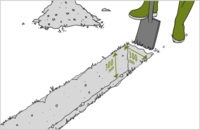
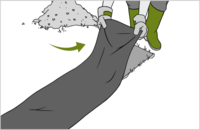
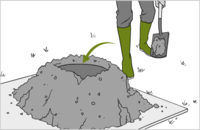
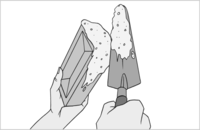
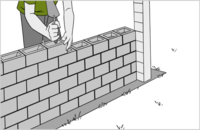






0 comments:
Post a Comment